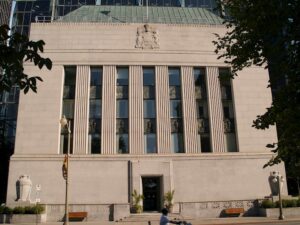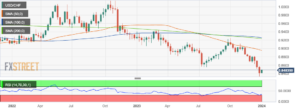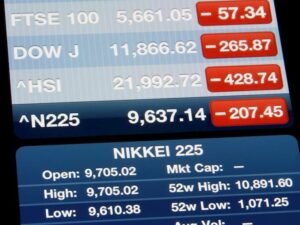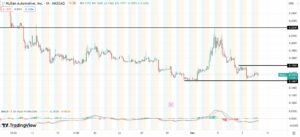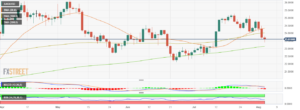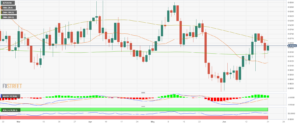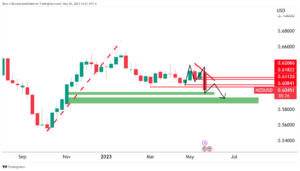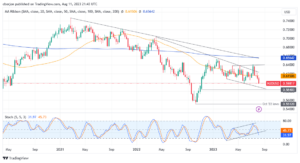
- Unemployment Rate in Canada is close to record-low levels, could bounce a bit in January.
- Canadian Dollar bulls need strong wage data, better-than-expected job growth to keep going strong.
- Bank of Canada is mulling a dovish pivot to end its interest rate hike path.
The Canadian Labor Force Survey, published by Statistics Canada, is set to be released on Friday, February 8 at 13:30 GMT. The market expects the Unemployment Rate to tick higher to 5.1%, from 5% in December. This goes in line with the softer forecast for the Net Change in Employment figure, which is estimated to post a 15K job gain, way below the 104K payrolls added in the previous month.
As the Bank of Canada (BoC) closes in on the end of its tightening cycle, the labour market data could influence the Canadian Dollar’s (CAD) performance against its rivals. A stronger than expected growth in payrolls and wage inflation, as measured by the Average Hourly Earnings, could help the CAD gather strength against its rivals in the near term. On the other hand, the currency is likely to have a hard time finding demand if the jobs report reveals loosening conditions in the labour market.
Canadian unemployment expected to rise, can it surprise and overperform again?
Earlier in the week, the Market Participants Survey for the fourth quarter of 2022 published by the Bank of Canada showed that the median of responses for the monetary policy rate by end-2023 stood at 4%, forecasting a 50 bps cut from the current level. Following the January policy meeting, the BoC hiked its policy rate by 25 basis points to 4.5% and noted that it is likely to hold the interest rate at this level while assessing the impact of cumulative rate increases on the economy.
A cooldown in the jobs market could definitely allow BoC policymakers to start considering a policy pivot and weigh on the Canadian Dollar. Market expectations for the January Labor Force Survey report are indeed notably lower than the December figures, as economists expect a relatively small job growth (market consensus at 15K) and lightly higher Unemployment Rate (5.1%).
In its policy statement, the Bank of Canada noted that it is prepared to increase the policy rate further if needed to return inflation to 2% target; continuing the quantitative tightening program. In December, annual wage inflation, represented by the Average Hourly Earnings, stood at 5.2%. A significant increase in that component is likely to be assessed as a factor that would limit the decline in consumer inflation. In that scenario, investors could refrain from betting on further Canadian Dollar weakness.
CIBC researchers also believe that the upcoming jobs report data will be worse than in December:
“We forecast a modest 5K gain in employment during January, which would be below the pace of labour force growth and see the unemployment rate tick up to 5.1%.”
USD/CAD early-year rally on hold ahead of January Canada Unemployment Rate release
The Canadian Unemployment Rate for January will be released within the publication of the Labor Force Survey on Friday, February 10 at 13.30 GMT. The market expects softer figures than in December throughout all the key indicators, which could play into the hands of USD/CAD bulls, who have recovered some ground in the past week, as the US Dollar (USD) rallied across the board after the super strong Nonfarm Payrolls data.
Zooming out a bit, USD/CAD has declined since the beginning of the year amid the broad-based selling pressure surrounding the US Dollar. The pair’s losses, however, were limited as the impressive January jobs report from the US revived expectations for two more 25 bps Fed rate increases in March and May, helping the USD regather its strength.
The pair faces strong support at 1.3300 (psychological level, static level) ahead of 1.3230, where the 200-day Simple Moving Average (SMA) aligns. A daily close below the latter could be seen as a significant bearish development and open the door for an extended slide toward 1.3250 (former resistance, static level). For that type of reaction to occur, though, the jobs report needs to offer surprisingly strong figures in wages and payrolls to revive hawkish BoC monetary policy expectations.
On the upside, 1.3500 (50-day SMA, static level, psychological level) forms interim resistance before 1.3540 (100-day SMA). In case USD/CAD rises above that hurdle and starts using it as support, it could target 1.3700 (static level, psychological level) next.
Canada unemployment report related content
About the Employment Change
The Labor Force Survey report from Statistics Canada includes the Net Change in Employment metric, which accounts for the change in the number of people who are employed in Canada. Usually, an increase in this figure is a positive indicator for the Canadian economy. As a result, the Canadian Dollar typically moves in either a bullish (in case of better-than-expected data) or bearish (in the opposite scenario) direction depending on the strength of the data.
About the Unemployment Rate
The Unemployment Rate is the ratio of unemployed people to the total civilian labor force. The indicator, published by Statistics Canada within its Labor Force Survey report, is used to assess Canadian job market performance. If the rate is higher, it usually means the Canadian economy is losing jobs. As a result, an increase in this number typically affects negatively the Canadian dollar. Otherwise, a decline in this number typically helps the CAD rally.
- SEO Powered Content & PR Distribution. Get Amplified Today.
- Platoblockchain. Web3 Metaverse Intelligence. Knowledge Amplified. Access Here.
- Source: https://www.fxstreet.com/news/canada-unemployment-rate-preview-canadian-dollar-traders-to-scrutinize-jobs-report-202302100700
- 1
- 10
- 2%
- 2022
- a
- above
- Accounts
- across
- added
- After
- against
- ahead
- Aligns
- All
- Amid
- and
- annual
- assessed
- average
- Bank
- bank of canada
- basis
- bearish
- before
- Beginning
- believe
- below
- Betting
- Bit
- board
- BoC
- Bounce
- broad-based
- Bullish
- Bulls
- CAD
- Canada
- Canada Unemployment rate
- Canadian
- Canadian Dollar
- case
- change
- Close
- Closes
- component
- conditions
- Consensus
- considering
- consumer
- continuing
- could
- Currency
- Current
- Cut
- cycle
- daily
- data
- December
- Decline
- definitely
- Demand
- Depending
- Development
- direction
- Dollar
- Door
- Dovish
- during
- Earnings
- economists
- economy
- either
- employment
- estimated
- expect
- expectations
- expected
- expects
- faces
- February
- Fed
- Figure
- Figures
- finding
- following
- Force
- Forecast
- Former
- forms
- Fourth
- Friday
- from
- further
- Gain
- GMT
- Goes
- going
- Ground
- Growth
- Hands
- Hard
- Hawkish
- help
- helping
- helps
- higher
- Hike
- hold
- However
- HTTPS
- Impact
- impressive
- in
- includes
- Increase
- Increases
- Indicator
- Indicators
- inflation
- influence
- interest
- INTEREST RATE
- interest rate hike
- Investors
- IT
- January
- Job
- Jobs
- jobs report
- Keep
- Key
- labor
- Labour
- Level
- levels
- likely
- LIMIT
- Limited
- Line
- losing
- losses
- March
- Market
- Market Data
- means
- meeting
- metric
- Monetary
- Monetary Policy
- monetary policy rate
- Month
- more
- moves
- moving
- moving average
- Near
- Need
- needed
- needs
- negatively
- net
- next
- notably
- noted
- number
- offer
- open
- opposite
- Other
- otherwise
- Pace
- participants
- past
- path
- Payrolls
- People
- performance
- Pivot
- plato
- Plato Data Intelligence
- PlatoData
- Play
- points
- policy
- policymakers
- positive
- Post
- prepared
- pressure
- previous
- Program
- Publication
- published
- quantitative
- quantitative tightening
- Quarter
- rally
- Rate
- Rate Hike
- ratio
- reaction
- related
- relatively
- released
- report
- represented
- researchers
- Resistance
- result
- return
- Reveals
- Revive
- Rise
- Rises
- rivals
- scenario
- Selling
- set
- significant
- Simple
- since
- Slide
- SMA
- small
- some
- start
- starts
- Statement
- statistics
- strength
- strong
- stronger
- Super
- support
- surprise
- Surrounding
- Survey
- Target
- The
- throughout
- tightening
- time
- to
- Total
- toward
- typically
- unemployment
- unemployment rate
- upcoming
- Upside
- us
- US Dollar
- USD
- USD/CAD
- usually
- wage
- wages
- weakness
- week
- weigh
- which
- while
- WHO
- will
- within
- would
- year
- zephyrnet


